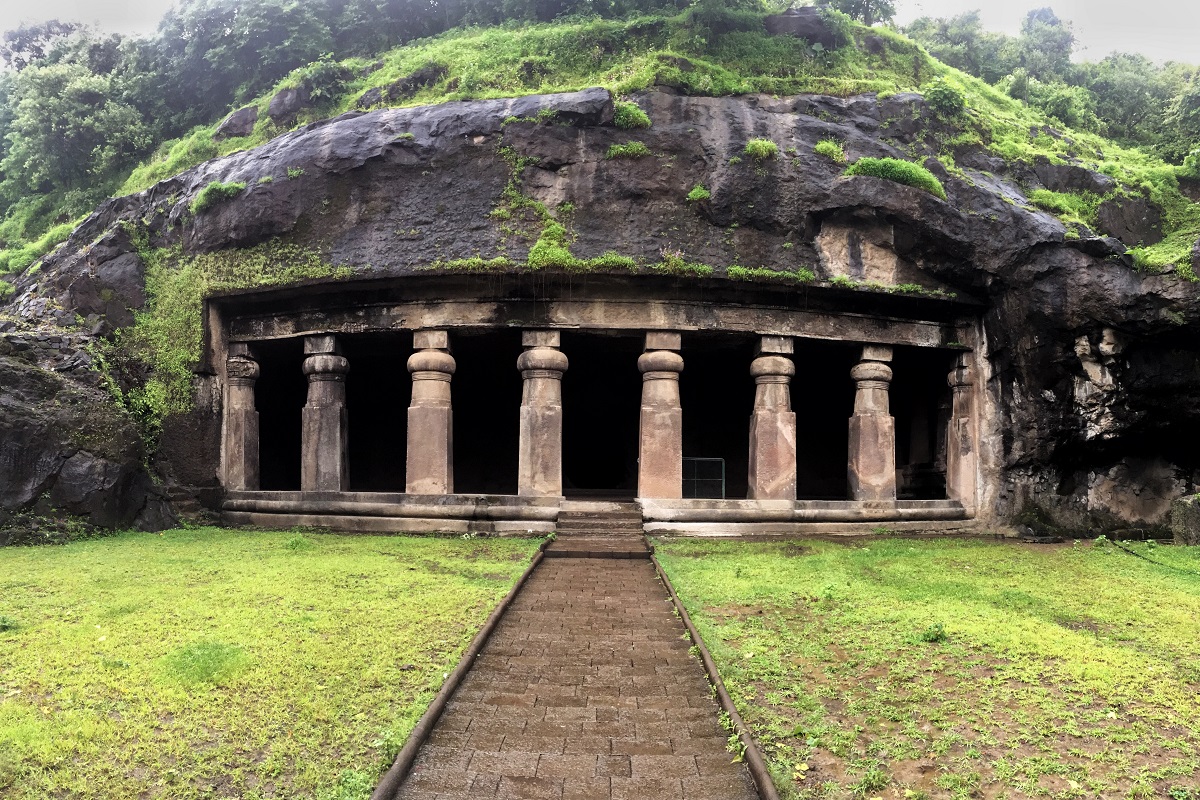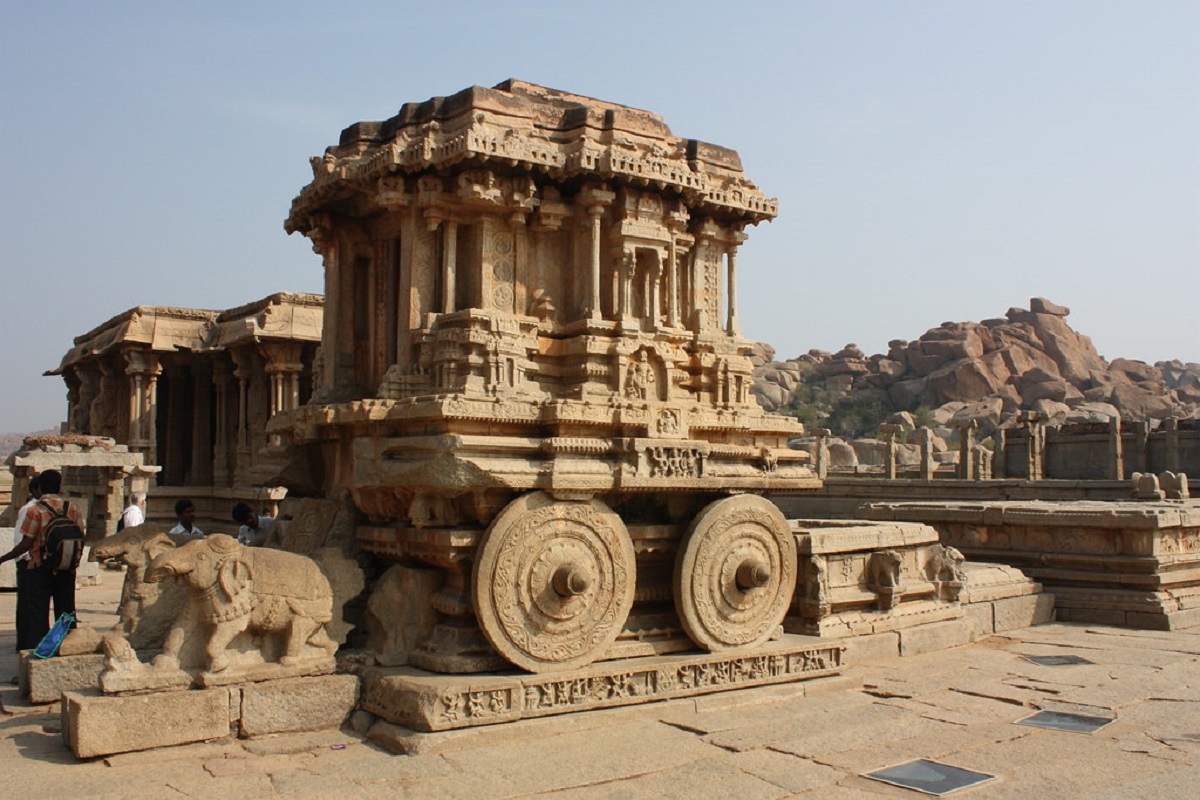If we are to make a list of tourist attraction in Maharashtra, Elephanta Caves will always hold a unique place of its own. Declared as a UNESCO World Heritage Site these collections of cave temples are mainly dedicated to the Hindu God Shiva. These caves are located on the Elephanta Island or Gharapuri locally known. It is in the Mumbai harbor about 10 kilometers east of Mumbai in Maharashtra. The island is situated about 2 kilometers west of the famous Jawaharlal Nehru Port.
You can find both Hindu as well as Buddhist stupa that can be dated back to 2nd century BCE. These caves are known to have both historical as well as artistic importance. It gives us a keen insight into the social religious norms and patterns as existed both in the Hindu and the Buddhist societies. However much of the artwork of these caves have been ravaged with time.
The carving reflects Hindu mythology which is mainly related to Lord Shiva. These rock cut cave temples attracts thousands of tourists and visitors every year not only from various parts of India but from different parts of the world as a whole.

Elephanta Caves Built by
There is much debate regarding the origin and the construction credit of these cave temples. Contemporary historians and scholars have opined that these temples can be dated back to the second quarter of the sixth century. Historians are of the opinion that the caves temple can be attributed to the period after Gupta Empire.
Many of these caves have been credited to King Krishna Raja of the Kalachuri Dynasty and can be dated back to the middle of the 6th century. They were dedicated to Lord Shiva which has been further corroborated by several inscriptions, numismatic evidences and style of construction.
The architectural pattern of these caves is similar to the ones found in the Ajanta Caves.
Elephanta Caves Time
You need to visit the Elephanta Caves during the daylight hours. The visiting hours for these cave temples are from 9:30 a.m. to 5:30 p.m. You need to take a ferry that leaves from the Gateway of India Jetty right at 9 a.m. and you will be on the Elephanta Cave right after an hour’s time. There is a ferry for the cave every half an hour from the same point that is the Gateway of India Jetty.
The last ferry leaves at 2 p.m. in the afternoon. The place does not have electricity so if you wish to check out all the details and explore the place properly you need to see it during the daylight hours.
Elephanta Caves Information
In the opening of the discussion it has been mentioned that Elephanta Cave is located on the Gharapuri Island. The island covers about 10 square kilometers on high tide and about 16 square kilometers in low tide. Gharapuri happens to be a small village on the southern side of the island. You can visit the Elephanta Caves all round the week except on Monday when the case remains closed for the tourists.
The island is about 2.4 kilometers in length and has two Hills which Rises to a height of about 400 & 90 feet. There is a deep and narrow ravine that separates both the hills and runs from north to south. There are five Rock cut cave temples on the Western Hill and the Eastern Hill has a Buddhist stupa on it. There are two Buddhist mounds on the eastern Hill which gives it the name of the Stupa Hill.
The Elephanta Island is one of the UNESCO protected sites which has been so since the year 1985. There is also a prohibited area of one kilometer around the shore line.
Elephanta Caves Location & How to Reach
To reach the Elephanta Caves you need to first come down to Mumbai. This is a rather easy preposition as Mumbai being one of the Metropolitan cities of India is very well connected to all the other cities of the country.

You can reach Mumbai through flights or even through Railways.
Once you are in Mumbai all you must do is reach the Gateway of India and take a Jetty to the island.
If you stay in some other city in Maharashtra you have to come down to Mumbai first to reach the Elephanta Caves
Elephanta Caves Ticket & Entrance Fee
Indian Tourists and tourists from BIMSTEC and SAARC countries must be Rs. 40 as the entrance fee to the Elephanta Caves.
Other foreign tourists have to pay Rs. 600 as the entry fee to these cave temples.
Children below the age of 15 years can visit the cave for free.
You can book these tickets once you are there at the exact location of the caves or you can pre book the tickets from the web.
Booking tickets from the virtual platforms is much more comfortable and convenient idea.
Elephanta Caves History & Important Structures
The Elephanta Caves consists of a cluster of rock-cut Hindu and Buddhist temples dedicated to the deities of both the religions. The island consists of two groups of rock cut cave that are made from solid basalt rock. Out of these two groups one group consists of five caves which are situated on the Western side of the hill Island. These are Hindu cave temple dedicated to Lord Shiva. The cave number one is the main cave out of these five caves. It is situated about one kilometer up a Hillside. This Temple faces the Mumbai Harbor. The caves 2, 3, 4 and 5 are placed next to cave one on the South Eastern side. The cave of 6 and 7 are situated about 200 meters North East to the first cave and the second cave. They are based on the edge of the Eastern Hill.

There is a walkway that connects the two hills. The Eastern Hill as mentioned in the opening of the discussion is also known as the Stupa Hill where as the Western Hill which consists of the Hindu temple is known as the Cannon Hill. This name was given to the hills during the colonial era. All the rock cut temples of this cave comes to around an area of 5600 square meters. These caves consist of two lateral chambers, one main chamber, subsidiary shrines and courtyard.
The cave one is the largest of the entire five caves and has elaborate different sections under it. All the temples consists inscriptions which reflects mythological stories related to Lord Shiva. Features of Shaivism are clearly depicted across all the rock cut temples in Elephanta Island. However through the inscriptions and the carving you can also get reflections of Vaishnavism and Shaktism.
Elephanta Caves Opening Time to Visit
The months between November and March happens to be the most favorable ones to visit elephant caves. If you are planning a visit in the month of March it is best to make it by 10th of the month. After this it gets really hot in Maharashtra.
Although Elephanta Caves is open round the year you should avoid visiting the place between the months of June and September. This is peak monsoon season and exploring the caves will not be a very good idea during this time.
The months of autumn winter and spring are the most favorable time when you can explore all the inscriptions and sculptures of the cave and can enjoy good photography and beautiful charming weather outside. In the month of February there is a local festival arranged in Elephanta Cave which is popular for showcasing local, dance, food, art and craft etc.
Elephanta Caves History
A very important part of the history of the Elephanta Caves lies in the reasons and agents that defaced and destroyed a major part of these cave temples. However, evidences, arguments and records regarding this aspect remain to be quite inconclusive even till current time.

A group of scholars hold the Gujarat sultanate responsible for dealing out some real harsh blows to the work of art and decoration across the cave temples. There is another section of historians who holds the Portuguese soldiers guilty for destroying the artwork of the caves. These historians have said that the Portuguese soldiers used these caves as a point of firing range and practiced targets on the statues. Yet again there is another section of historians who have held the Marathas responsible for the doom of the Caves.
It was in the 1970 when the Government of India took some real major steps for restoration of these cave and considered them as important heritage sites. Today the Archaeological Survey of India or the ASI is responsible for the upkeep and maintenance of these cave temples.
Elephanta Caves Location & Attractions nearby
It is clear by now that the Elephanta Caves lie very near to Mumbai. Naturally once you are done with exploring these caves you will always try the other popular points of sightseeing in and around Mumbai.
Some popular attractions in Mumbai will be the Siddhivinayak Temple, the Haji Ali Dargah, the Queen’s necklace, the videos popular film studios, popular shopping areas, etc. You can also try other popular tourist attractions outside Mumbai like the pristine beaches in Goa, Ajanta and Ellora Caves, the super scenic beauty of Mahabaleshwar, the Shirdi Sai Mandir in Shirdi, etc.







